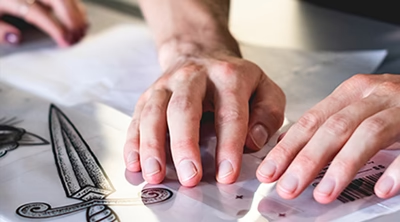How to Choose the Right Garment for Screen Printing
When you’re new to screen printing, it’s easy to think a t-shirt is a t-shirt. But any experienced printer will tell you the garment you choose can make or break your project. Fabric weight, style, and quality all impact not only how your print looks but also how your customer feels wearing it. Let’s break down some key differences to help you pick the right blank for every job.
Understanding T-Shirt Weight:
When browsing wholesale apparel catalogs, you’ll see shirts listed by weight (e.g., 4 oz, 5.3 oz, 6 oz). This refers to the fabric’s weight per square yard. While the numbers may seem small, the difference is noticeable in feel and performance.
Lightweight (around 4 oz)
Super soft and breathable
Great for spring and summer wear
Often used for promotional giveaways or budget-friendly projects
May feel thinner and have less structure, can stretch out more easily
Midweight (5–5.5 oz)
A balanced choice between softness and durability
Works well for everyday wear or retail tees
Comfortable in most seasons
Heavyweight (6 oz and up)
Thick, durable, and structured
Holds its shape better, less likely to stretch out
Ideal for fall and winter apparel
Popular in streetwear and retail markets
Pro tip: A 4 oz tee is perfect for handing out at a summer event, but if you’re printing for a clothing brand that wants a premium retail look, a 6 oz heavyweight tee might be the better choice.
Retail vs. Promotional Tees
Not all shirts are made with the same end use in mind.
Promotional Giveaways
Typically lighter weight (4–5 oz)
Budget-friendly
Great for large runs where cost matters more than garment longevity
Perfect for events, concerts, fundraisers, or swag bags
Retail Apparel
Midweight to heavyweight (5.5–7 oz)
Premium feel and durability
Higher price point, but adds value to your print
Designed to be worn again and again. Ideal for clothing brands or merchandise lines
Sweatshirts and Hoodies
When people think “hoodie,” they often picture a thick, fleece-lined winter staple. But just like t-shirts, sweatshirts and hoodies come in different weights.
Lightweight Fleece (6–7 oz)
Perfect for transitional weather or layering
Comfortable without being overly warm
Great option for spring and early fall collections
Midweight Fleece (7.5–8.5 oz)
A versatile choice for year-round wear
Soft and cozy but not too bulky
Often the go-to option for printers stocking blanks
Heavyweight Fleece (9–12 oz)
Thick, warm, and built for colder climates
Premium retail feel
Popular in streetwear and fashion markets
Pro tip: Don’t assume a hoodie will automatically be thick. If your client wants something cozy for a chilly fall evening, ensure you choose midweight or heavyweight fleece.
Why Garment Choice Matters
Print Quality: Different fabrics and weights hold ink differently. A heavier shirt might feel more stable under the press, while a lightweight tee may need a softer print approach.
Customer Satisfaction: The right shirt ensures customers actually wear your prints, which is key for repeat business.
Price Point: Understanding garment tiers helps you price jobs correctly and upsell premium options when appropriate.
Final Thoughts
As a new printer, it’s tempting to think any blank shirt will do. But once you understand garment weights and their uses, you’ll be able to guide your customers toward the best choice for their needs. Whether it’s a lightweight 4 oz tee for a summer festival or a heavyweight hoodie for a retail streetwear line, choosing the right garment sets you up for a successful print and happy customers.


.webp)

Comments
Post a Comment